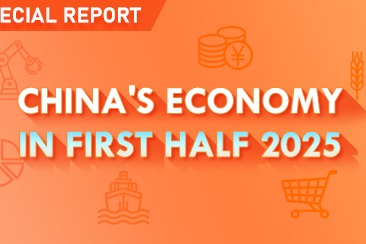Official: Financial risk control top priority


Maintaining financial stability has never left Chinese macroeconomic officials' agenda and "grey rhino" style financial risks are rising in some areas, including local government debt, bond markets and overpriced housing, a senior official warned on Thursday.
Usually, financial risks that are broadly known but easily ignored are called "grey rhinos". When the risks emerge in one particular sector, the whole financial system will be shaken in the short term.
The deleveraging process will continue this year, especially in some key areas, or "structural deleveraging", as financial risk remains a threat to stable economic growth, according to Wang Jingwu, head of the financial stability bureau of the People's Bank of China, the central bank.
Wang especially mentioned some high-risk phenomena, such as local governments' large contingent liabilities, rising bond defaults and property market risks.
Risk exposure could also rise in some financial holding groups and rural financial institutions. Risks from fintech and peer-to-peer online lending also require special attention, according to the official.
That was the first message from the new bureau head to the public since Wang succeeded the PBOC's current spokesman Zhou Xuedong earlier this year to lead the central bank's major and tough task of stabilizing the financial system.
Besides Wang, some other high-level financial regulators also sent out warning messages after Chinese stocks entered a bullish territory on Monday, pointing out that an irrational investment rush may lead to huge fluctuations in the capital market. Onshore stocks expanded their gains to more than 20 percent since the beginning of this year at Monday's close.
Wang warned investors about the "liquidity illusion", a Keynesian term meaning a price drop when investors sell assets at the same time, which can lead to losses.
"Risks arising from irrational fluctuations should not be ignored," stressed the bureau head, pointing to the greater probability of risks affecting the stock, foreign exchange and bond markets.
The authorities have set a target of generally completing the key missions and control financial risk at a certain level by 2020, according to the PBOC official.
Wang Zhaoxing, vice-chairman of the China Banking and Insurance Regulatory Commission, said at a news conference on Monday that the government needs to gear up to fight a hard and enduring battle, because even though some original risks are resolved, "there may be new incremental risks".
China's financial regulators started a de-risking and deleveraging campaign in mid-2017, and formed a basic "action plan" in 2018, focusing on controlling the macro leverage level, the overall debt-to-GDP ratio and shadow banking activities.
Some analysts said that the crackdown on shadow banking induced a liquidity squeeze in 2018, causing particularly acute funding pressure for private enterprises in an environment of rising concerns accentuated by trade tensions with the United States.
Robin Xing, chief economist with Morgan Stanley, said China's overall leverage level was lowered last year for the first time in 11 years, down from 278 percent of GDP to 273 percent, as his team calculated.
The corporate sector's leveraging ratio may not deteriorate this year although some default cases happened recently. The continually improved liquidity situation, as a result of "counter-cyclical" policy adjustments by the central bank, will support stable financing for the corporate sector, said Xing.
Research from the Fitch Ratings showed that China's shadow banking shrank in 2018, and it will continue to drop for the second year in a row, "albeit at a more gradual pace as the authorities attempt to strike a balance between reining in excessive leverage and ensuring satisfactory economic growth in the face of potential economic headwinds".




































